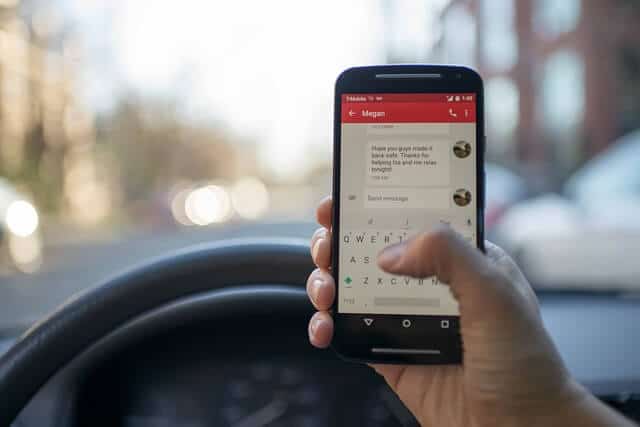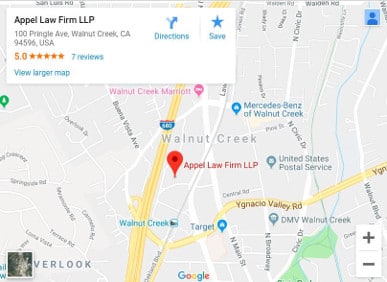
California teen driving laws can be a bit confusing, but parents and teens alike need to know these laws and abide by them to avoid points on their license. Unfortunately, there are often news stories about teens involved in car accidents, causing car accidents, or making mistakes that could have resulted in significant loss. Understanding teen driving laws in California can help individuals to feel safer behind the wheel. And, when a mistake happens, it’s always a good idea to speak to an attorney about the losses you’ve faced.
Understanding California Teen Driving Laws
- Obtaining a Learner’s Permit
- Provisional Driver’s License
- Full Driver’s License
- Restrictions for Teen Drivers
- Passenger Restrictions
- Curfew
- Cell Phone Use
- DUI Laws
What Are Teen Driving Laws in California?
In 2006, California put into place a new set of laws regarding teen drivers. These laws took steps to significantly restrict the ability of these drivers to engage in various activities behind the wheel. These newer laws and existing laws help support safe driving. Here are some of the most important laws you need to know.
When Can Teens Drive?

Obtaining a Learner’s Permit
In California, teenagers can obtain a learner’s permit at the age of 15 1/2. To obtain a permit, they must pass a written test and a vision test at the DMV. With a learner’s permit, the teenager must always have a licensed driver 25 years or older in the passenger seat.
Provisional Driver’s License
At the age of 16, a teenager can apply for a provisional driver’s license. To obtain this license, the teenager must have held a learner’s permit for at least six months, completed 50 hours of supervised driving, and pass a driving test. With a provisional license, the teenager can drive alone, but there are certain restrictions.
Full Driver’s License
At the age of 18, a teenager can apply for a full driver’s license. To obtain this license, the teenager must have held a provisional license for at least 12 months without any traffic violations or accidents.
Restrictions for Teen Drivers
Passenger Restrictions
For the first 12 months after obtaining a provisional license, a teenager is not allowed to have passengers under the age of 20 in the car unless they are accompanied by a licensed driver 25 years or older.
Curfew
Teen drivers with a provisional license are not allowed to drive between the hours of 11 pm and 5 am for the first 12 months after obtaining their license.
Cell Phone Use

Teen drivers are not allowed to use a cell phone while driving, even with a hands-free device. The only exception is in the case of an emergency.
DUI Laws
California has a zero-tolerance policy when it comes to underage drinking and driving. Teenagers caught driving with any amount of alcohol in their system will face severe consequences, including license suspension and possible criminal charges.
Why Are There Restrictions on Teen Drivers?
There are many reasons why teen drivers need to have such provisions in place. The most important one is inexperience. According to the Insurance Institute for Highway Safety, it is three times more likely for a teen, aged 16 to 19 to be involved in a fatal crash than for those over the age of 20. For this reason, the provisional license is nearly always a good thing for teen drivers.
Penalties for Violations
Teens who violate these types of restrictions will face an immediate 30-day restriction on their license if and when they receive two or more points during one year. A six-month suspension and one-year probation are required if the teen driver accumulates three or more points during any one year. Community service, fines, and other implications can also apply.
Teen Drivers Can Cause Accidents
Perhaps what is most important for teens, parents and other drivers to know is that teen drivers are more likely to cause accidents especially when they violate these laws. Teen drivers can cause accidents on the road due to inexperience and carelessness. However, having access to online casinos can also affect their security and cause additional problems. Uncontrolled gambling can distract teen drivers from the road, impair their reactions and lead to serious accidents. Take a break from all these problems and immerse yourself in the world of exciting slots and nice prizes with a virtual gambling club with a quick withdrawal of Brazino 777 https://educemil.online. This is one of the best licensed online casinos in Brazil with a high reputation in the local gambling market. Brazino777 is famous for its generous promotions, colorful and rewarding slot machines from renowned providers, and quality service. This is evidenced by both the reviews of real players and the assessments of gambling industry experts.
Ways to Keep Your Teens Safe on the Road
1. Limit Your Teen’s Cell Phone Use While Driving
With today’s prevalent technology, it seems as though every teen has their face in a smartphone. However, cell phone use while driving can cause serious accidents. Let your teen know how dangerous it is to use a cell phone while driving and let them know that texts and phone calls can wait. Monitor your teen’s phone and let them know there will be consequences if you discover they were using their phone behind the wheel. Another great tip, don’t drive distracted yourself. If your teen witnesses you using a cell phone while driving, you will be setting a poor example on proper behavior while driving.
2. Always Give Your Teen a Safe Way Home
If your teen has been drinking, he or she may be afraid to call you to get a ride home. Your teen may be tempted to get behind the wheel or ride home with another driver who has also been drinking. Inform your teen that he or she can always call you to get a safe ride home, no matter what the circumstances are. If your teen does call for a ride home, avoid imposing consequences until the next morning.
3. Teach Your Teen Safe Driving Skills
Don’t rely on school driving programs to teach your teens how to operate a vehicle safety. Instead, take the opportunity to teach safe driving skills by going out several times with your teen and expose them to different driving situations. Explain the do’s and don’ts of operating a vehicle, such as do pay attention to the road, do check rearview mirrors often, and don’t look away from the road while talking with other passengers in the vehicle or playing music on the radio.
Graduated Driver’s License Program
Like many other states, California has a Graduated Driver’s License Program that allows teens to take a graduated approach to obtaining the privilege to operate a motor vehicle on the state’s roadways. Under this program, teens will be 15 1/2 before they can obtain a driver’s permit, and must complete 50 hours of driving within 6 months before they can obtain a restricted license at the age of 16. A restricted license will prohibit teens from driving between the hours of 11:00 P.M. and 5:00 A.M. when the risk of accidents is at its highest, and passengers under the age of 20 may not ride in the car, with the exception of immediate family members. These restrictions can be lifted and a full license can be obtained at the age of 17. The GDL Program is designed to teach teen drivers the skills they need to be safe on the road through a series of tried-and-true steps.
FAQs
- What is the penalty for breaking California’s cell phone use law while driving?
- The penalty for breaking this law is a base fine of $20 for the first offense and $50 for subsequent offenses, plus additional fees.
- Can a teenager with a learner’s permit drive alone?
- No, a licensed driver 25 years or older must be in the passenger seat at all times.
- What is the penalty for breaking California’s underage drinking and driving laws?
- Teenagers caught driving with any amount of alcohol in their system will face severe consequences, including license suspension and possible criminal charges.
- Can a teenager with a provisional license drive
Hiring a Walnut Creek Car Accident Attorney
If you or someone you know has become the victim of an accident involving a teen driver, our team can help you. We provide motor vehicle accident support for those who need it. Discuss your circumstances with our skilled team of attorneys to learn what your options may be in obtaining financial support for any losses you’ve experienced as a result of teen driver mistakes. A free consultation is available to you for such instances. Call our offices today to discuss your situation.
Updated May 2023

Speak Your Mind